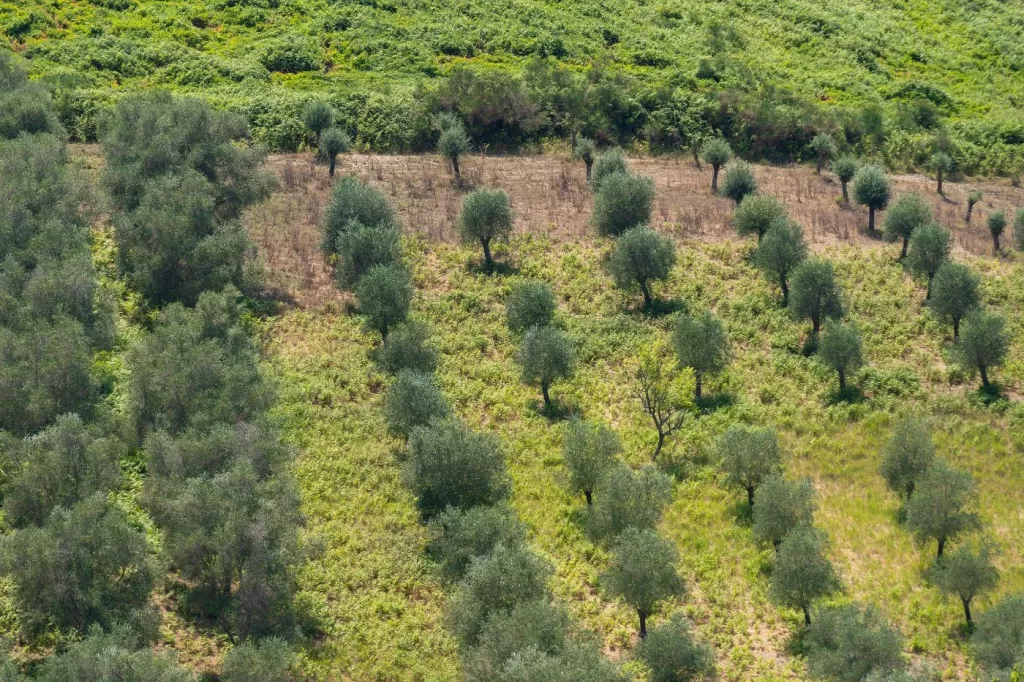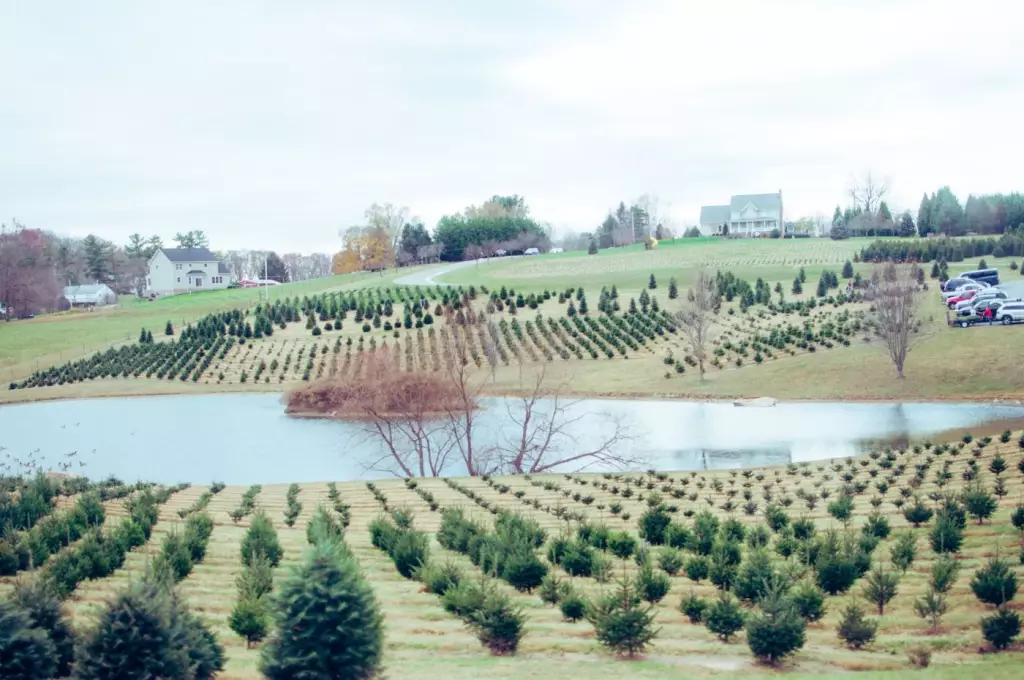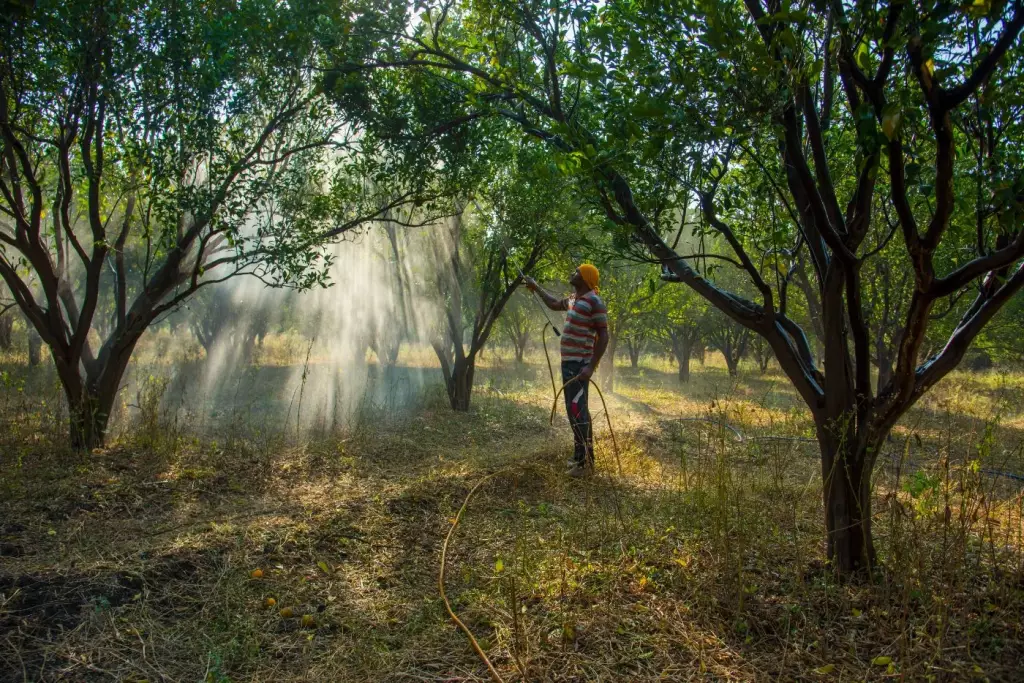How Many Acres Do You Need for a Tree Farm?
Different trees have varying growing requirements and space needs. Think about the tree species you want to cultivate and the recommended spacing between trees. This will play a critical role in determining the overall size of your farm. For example, the recommended tree spacing for American beech trees is 20 feet, while black walnut trees require 30 feet.
Most hardwood timber species require a minimum of 5 acres. A 1-acre Christmas tree farm can potentially accommodate up to 1,500 trees. For a small-scale orchard, you may start with as little as 1 acre, but larger operations may require at least 10 acres. A biomass farm should have at least 5–10 acres.
You may want to plan for the potential growth and expansion of your tree farm. For instance, you could use part of your land as a nursery, while other parts could be dedicated to timber or fruit production. Let's learn more about this and how you can determine the right size for your tree farm.
Summary
- The number of acres you need for a tree farm depends on several factors, including the type of trees you intend to grow, your target market, and your plans for managing and maintaining the farm.
- Smaller farms may be easier to manage, but larger farms can offer more profitability and simultaneously serve different markets.
- Think about the tree species you want to cultivate. Softwood species can grow on smaller plots, while most hardwood species require a minimum of 5 acres.

On this page:
Tree Farm Size Requirements
The size of the land needed for your tree farming venture will depend on several factors, such as the purpose of your tree farm, the species of trees you plan on growing, and local regulations.
| Farm Type | Minimum Size | Tree Spacing |
|---|---|---|
| Timber farms | 5 acres | 10–12 feet |
| Christmas tree farms | 1 acre | 5–6 feet |
| Orchards | 1 acre | 15–20 feet |
| Biomass farms | 5–10 acres | 3 feet |
Purpose of the tree farm determines the acreage needed
If you're planning to grow trees for personal use, such as for lumber or landscaping, you may need a smaller plot of land. On the other hand, if your goal is to establish a commercial farm, you'll need a larger area to grow more trees and expand your business.
Some common tree farm purposes include:
- Lumber production
- Christmas tree farming
- Fruit tree cultivation
- Reforestation efforts
Species of trees determine the acre size for your farm
Different species have various space requirements, growth rates, and maintenance needs. For instance, fast-growing hardwood trees may require more space in between, while fruit trees might need a denser planting strategy. Research the specific space requirements of the tree species you're interested in to help you estimate how many acres you'll need.
Local regulations for tree farming
Lastly, it's crucial to research and understand local regulations concerning tree farming. Some areas may have zoning restrictions, environmental regulations, or conservation laws that could impact the size and location of your farm. Check with your local government or Department of Agriculture office for more information on specific requirements and restrictions.
Sizing Recommendations by Farm Type

Timber farms require a minimum of 5 acres
When planning a timber farm, consider the type of trees you want to grow and the final harvest size. Most hardwood timber species require a minimum of 5 acres, while softwood species can grow on smaller plots. Aim for a tree spacing of 10–12 feet between each tree for optimal growth. Remember that you'll need room for roadways and work areas as well.
Christmas tree farms can be 1 acre
For a Christmas tree farm, determine the number of trees you want to grow per acre. A common recommendation is 1,000 to 1,500 trees per acre, with a spacing of 5–6 feet between trees and 6–8 feet between rows.
A 1-acre Christmas tree farm can potentially accommodate up to 1,500 trees. However, you may need additional space for parking, sales, and storage areas.
Orchards can be as little as 1 acre
In an orchard, the required acreage depends on the type of fruit you're growing and the planting density. For example, apple trees typically need 12–15 feet of spacing between trees and 18–20 feet between rows, while stone fruits like peaches may need 15–20 feet of spacing between trees.
Use a tree spacing calculator to determine the optimal setup. For a small-scale orchard, you may start with as little as 1 acre, but larger operations may require at least 10 acres.
Biomass farms should have at least 5–10 acres
Biomass farms primarily grow short-rotation woody crops like willow and poplar to be harvested for energy production. Depending on the species, you'll need to consider factors such as planting density, site preparation, and yield per acre.
Generally, your biomass farm should have at least 5–10 acres to reach economies of scale and cover the cost of equipment and maintenance.
Site Selection for Your Tree Farm

Soil types and quality for different tree species
Different tree species thrive in various soil conditions, so selecting a site with the appropriate soil type is essential for your tree farm's success. To determine the type of soil on your land, you can perform a soil test. Knowing the soil's pH, nutrient levels, and texture will help you choose the ideal tree species for your farm. Remember to select tree species that can tolerate your site's soil conditions.
Topography and terrain of the land
The landscape can affect tree growth, water availability, and overall farm management. Keep in mind that certain tree species may require well-drained or evenly distributed moisture. When selecting a site, look for land with slopes that allow for proper drainage and minimal soil erosion. It's also essential to consider factors such as accessibility, sunlight exposure, and wind protection for your tree farm's success. The Penn State Extension guide recommends:
- Evaluating the site's accessibility for planting and maintenance equipment
- Observing the sunlight exposure throughout the day
- Knowing the prevailing wind direction and selecting a site with adequate wind protection
Climate and microclimate of the site for your tree farm
Different tree species have specific temperature, rainfall, and humidity requirements for optimal growth. Study the regional climate patterns, including temperature fluctuations, frost dates, and seasonal rainfall.
Also, take into account the microclimate, which refers to localized variations in temperature, humidity, and wind within your site. Understanding both the climate and microclimate will help you select the right tree species for your farm and ensure healthy, long-lived trees.
Planning and Layout of Your Tree Farm

In this section, you will learn about tree spacing, infrastructure, and access. These elements will help you optimize your tree farm and promote efficient operations.
Tree spacing allows trees to grow healthily
The ideal spacing depends on the type of tree you're planting, and it's essential to research the specific requirements for each species. One example is the recommended tree spacing for American beech trees, which is 20 feet, whereas European beech trees require a 24-foot spacing.
When planning your farm's layout, consider the following factors for tree spacing:
- Growth rate of the tree species
- Size of the mature trees
- Root systems and canopies
Infrastructure planning for your tree farm
Proper infrastructure is necessary to maintain a productive tree farm. As you begin planning, consider the following aspects:
- Irrigation: Determine the water needs of your tree farm and plan how you'll provide an adequate supply to each tree. This could include drip irrigation systems, sprinklers, or ponds.
- Shelter: Incorporate windbreaks and shelterbelts into your design to protect your trees from strong winds, which can cause damage or stunt growth.
- Nursery: A nursery area where you can grow seedlings or transplant saplings is invaluable to maintaining a steady supply of trees for your farm.
- Storage and equipment facilities: Plan for storage areas to keep essential tools, equipment, and materials organized and readily accessible.
Access to your tree farm
Easy access to your tree farm is vital both for your efficiency and for the eventual harvest. Consider the following when planning access to your farm:
- Roads and pathways: Make sure you have paths or roads wide enough for machinery to navigate easily, allowing efficient management of your farm.
- Harvest access: Plan for a site large enough to accommodate trucks or heavy machinery for the removal of harvested timber.
- Maintenance access: Ensure you can easily reach all areas of your farm for regular upkeep and maintenance.


